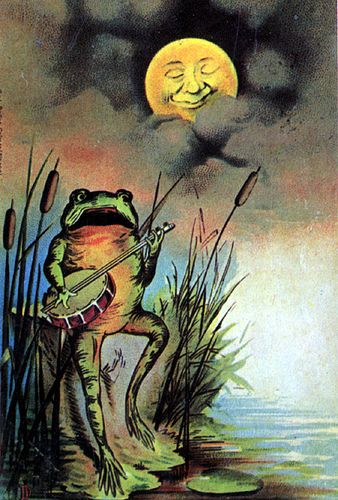One theory says that the Earth and Moon were formed at the same time, out of the same dust and gas. The problem with this theory is the composition of the Moon's rocks. While Earth's rocks are comprised of mostly metals and heavier elements, the Moon's rocks are decidedly metals-poor. With such vast differences in compositions, there isn't much chance that Earth and Moon were formed at the same time, from the same stuff.
Another theory of the Moon's beginning is called the Lunar Fission Theory. This theory suggests that the Moon was spun out of the Earth early in solar system's history. Although the Moon doesn't share the Earth's composition, it does bear a striking resemblance to the outer layers of this planet. Unfortunately, there's a problem with this theory, too. Earth doesn't spin fast enough to spit out anything and likely didn't early in it's history....or fast enough to hurl a baby Moon out into space.
The third scenario is the Large Impact Theory and this seems to be the most plausible. It suggests that the Moon, rather than being spun out of the Earth, was formed when material was likely ejected from the Earth during a massive impact. An object roughly the size of Mars, which scientists have called Theia, is thought to have collided with baby Earth early in it's evolution. Because Earth was still growing and forming, is probably the reason why we see no evidence of the hit on this planet's landscape. Material from Earth's outer layer was sent hurling into space, but gravity kept it from going too far out. This still-hot matter began orbiting around little Earth, colliding with itself, until it finally stuck together like putty. After it cooled, the Moon morphed into the shape we know today.
While the Large Impact Theory is thought to be the most likely, there's still one question left unanswered; Why is the far side of the Moon so different from the near side? The answer isn't certain, but some scientists theorize that when Theia rammed into young Earth, two Moons were formed, not just the one. Over time, these two Moons began a slow migration towards each other until they, too, eventually collided with each other resulting in a single Moon.
This idea may help to explain some aspects of the Moon that the other theories do not. But lots of research still needs to be done to prove that it could have happened, using evidence from our constant companion, itself...the Moon. Whatever the true story of the Moon's birth, it is quite clear that it isn't made of Swiss cheese, like my mom told me when I was just a tadpole.

 RSS Feed
RSS Feed